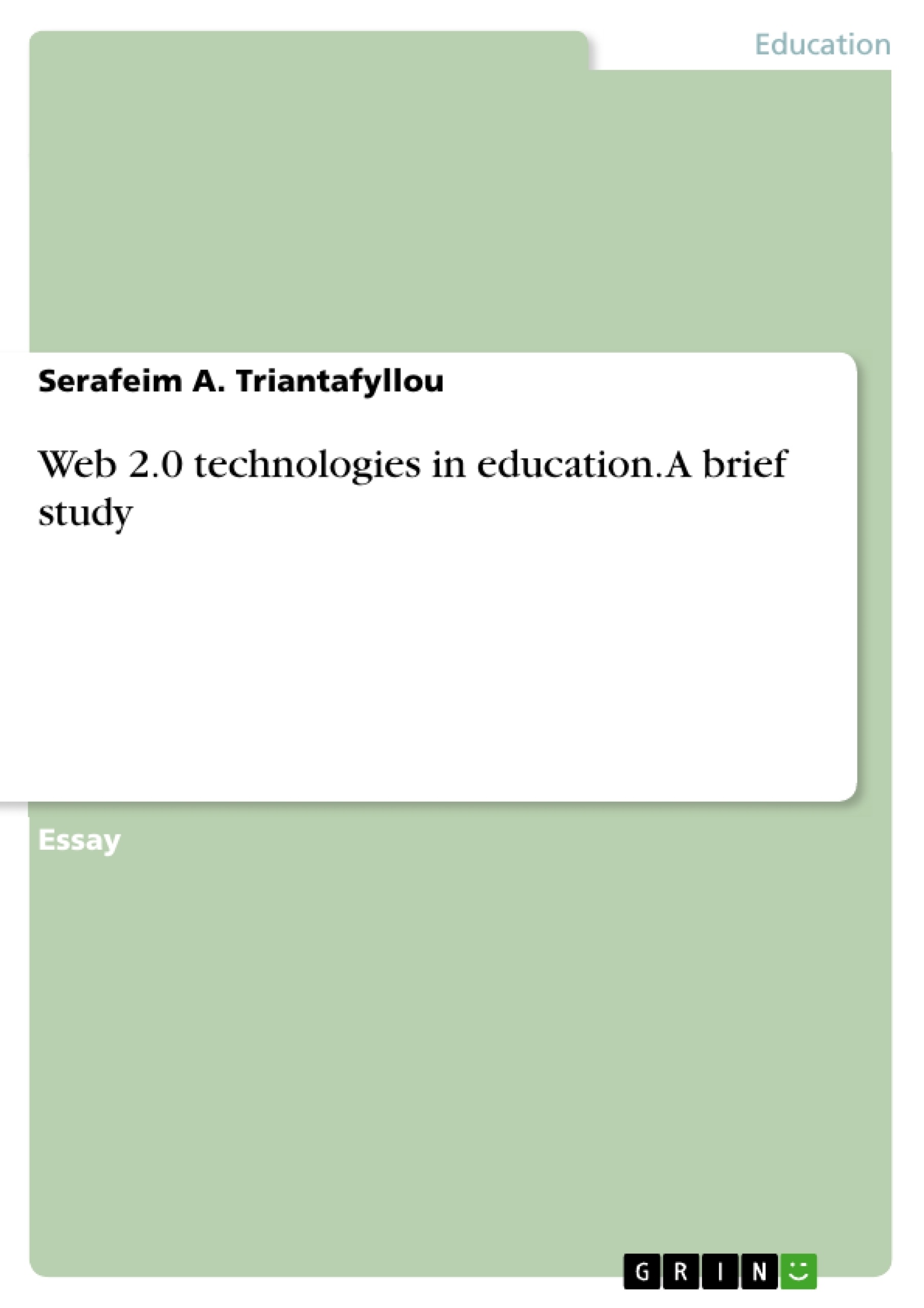This study investigates the second generation of the World Wide Web, called Web 2.0. The revolution of Web 2.0 over Web 1.0 was that it allowed Internet users not to be passive recipients. who simply read the digital content of a web page, but enabled them to add digital content, share information, and collaborate online. The blast of Web 2.0 is therefore largely based on the electronic sharing of knowledge and information.
In this paper the basic features of Web 2.0, its basic services, functions and tools will be firstly described. Next, concepts such as social networking services and social networks will be analyzed and the application of Web 2.0 in education, as well as the benefits it can bring will be studied.
In conclusion, a summary of the possibilities of Web 2.0 is made and the advantages, disadvantages and its role in the educational process are presented through a critical point of view.
One of the major differences between Web 2.0 and the traditional World Wide Web is the greater collaboration between Internet users and other users such as digital service providers and businesses. While Web 1.0 was software organized around pages, technologies, and businesses, Web 2.0 was organized around ordinary people and services. In the Web 1.0 era, internet users had the ability to read the digital content of a web page but could not create their own since the only person who could update the web page content was its webmaster. In other words, we would say that Web 1.0 was not oriented towards the creation of digital content by internet users.
Table of Contents
- Introduction to Web 2.0 - Basic concepts
- Web 2.0 definition
- Features of Web 2.0
- Web 2.0 services and tools
- Application of Web 2.0 in education
- Conclusions - Suggestions
Objectives and Key Themes
This study aims to analyze the key features and applications of Web 2.0, focusing on its impact on education. It explores the evolution from Web 1.0 to Web 2.0, highlighting the shift from passive content consumption to interactive engagement and knowledge sharing.
- The evolution and key features of Web 2.0
- The role of Web 2.0 in facilitating collaboration and user-generated content
- The impact and benefits of Web 2.0 in educational settings
- The potential and limitations of Web 2.0 in fostering learning and knowledge dissemination
Chapter Summaries
- Introduction to Web 2.0 - Basic concepts: This chapter defines Web 2.0 and differentiates it from Web 1.0, emphasizing the key features of open access, collaboration, user-generated content, and social networking. It explores the evolution of the web, focusing on the shift from passive information consumption to interactive knowledge sharing and creation.
- Application of Web 2.0 in education: This chapter examines how Web 2.0 technologies are applied in educational settings, highlighting their potential benefits for students and educators. It explores the use of social media platforms, wikis, blogs, and other tools for communication, collaboration, and knowledge sharing.
Keywords
This study focuses on Web 2.0 technologies, social media, and social networking as key components of the digital landscape. It explores how these elements are impacting education, highlighting the importance of user-generated content, online collaboration, and the broader shift in learning environments.
- Quote paper
- Serafeim A. Triantafyllou (Author), 2014, Web 2.0 technologies in education. A brief study, Munich, GRIN Verlag, https://www.grin.com/document/921944




